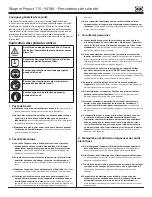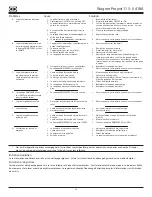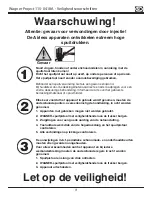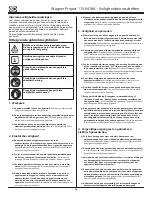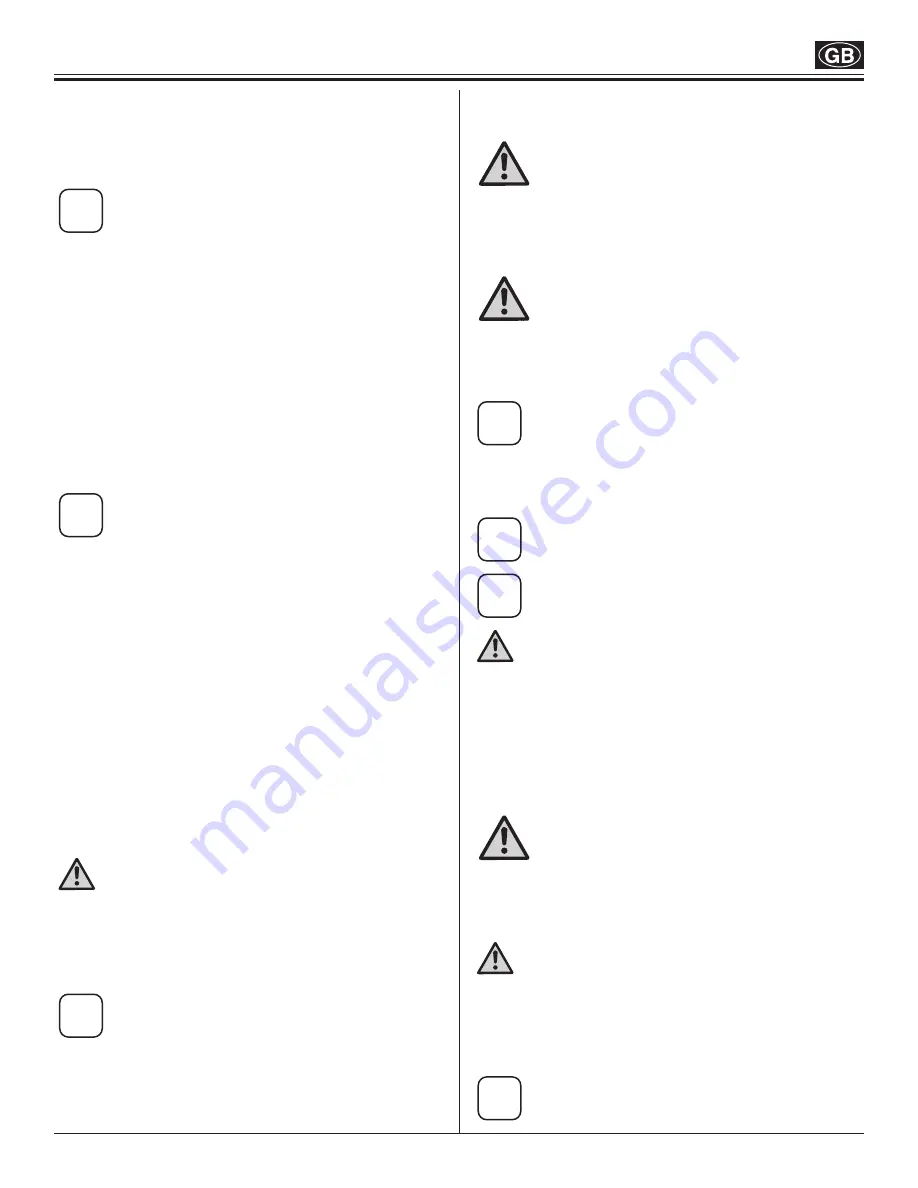
Wagner Project 115 - 0418A
Assembly
Figure 2 - Assembling the Wheels
1. Slide the spacer (a), the wheel (b) and the push nut (c) over the
end of the axle in the order shown. Make sure the spacer (a) is
oriented so the lipped side will face toward the middle of the
axle.
i
You will need to stand the axle vertically on a flat and
stable surface to assemble the wheels.
2. Lightly tap the assembly aid (d) with a mallet to secure the
push nut (c) over the end of the axle. Repeat steps for other
wheel.
Figure 3 - Assembling the Axle
1. Slide both ends of the axle up into the slots (a) as shown.
The
lipped side of the spacers (b) should go inside of the axle
slots.
2. Make sure each axle plate is oriented and located as shown (L
and R). Secure each plate with two (2) screws. Snap the wheel
caps (e) over the ends of the push nuts.
Figure 4 - Assembling the Handle
1. To assemble the handle, press the button (a) as shown and
slide the handle into the cart assembly.
2. Once the handle is fully inside the cart, release the button and
pull the handle until it locks in up or down position.
Figure 5 - Attaching the Hose
Danger
Make sure that the pump is switched off (position O) and
the spray device is disconnected from the power supply.
1. Screw the thread of the high-pressure hose onto the spray
hose connection. Tighten with an adjustable wrench.
2. Thread the other end of the hose to the spray gun.
Grip the spray gun with an adjustable wrench on the handle,
and tighten the hose nut with the other.
i
The spray tip should not be attached until after the
sprayer and spray hose have been purged and primed.
Before You Begin
Figure 6 - Locking the Spray Gun
Danger
Always lock the trigger off when attaching the spray
tip or when the spray gun is not in use.
1. The gun is secured when the trigger lock is at a 90° angle
(perpendicular) to the trigger in either direction.
Figure 7 - Pressure Relief Procedure
Danger
Be sure to follow the Pressure Relief Procedure when
shutting the unit off for any purpose.
This procedure relieves the pressure from the spray hose
and the gun.
1. Lock the spray gun off. Flip the ON/OFF switch to the OFF
position.
2. Turn the PRIME/SPRAY knob to PRIME.
i
Take care not to pinch your fingers when turning the
switch.
3. Unlock the spray gun and trigger spray gun into the side of
the material bucket. Lock the spray gun.
Figure 8 - Removing / Emptying the Hopper
i
Make sure your floors and furnishings are protected
with drop cloths to avoid property damage.
i
Always place the hopper on a hard, flat, stable surface
when removed.
Danger
Perform the Pressure Relief Procedure (see figure 7) and
unplug the sprayer.
1. Perform Pressure Relief Procedure.
2. Pull the return tube (a) from the rear of the hopper lid.
3. Grab hopper by the side handles (b) and gently pull it out.
4. When finished emptying / cleaning, replace hopper and
hopper lid.
5. Replace the return tube by inserting it through the notch in
the hopper lid.
Danger
The hopper can be heavy when filled with spraying
material. Make sure to lift with your legs and not
your back in order to reduce the risk of injury.
Purging and Priming
Figure 9 - Priming the Sprayer
Danger
Make sure that the pump is switched off (position O) and
the spray device is disconnected from the power supply.
1. Pull the return tube from the hopper and hold it over a waste
container.
2. Turn the PRIME/SPRAY knob to PRIME. Plug in the sprayer.
Press the ON/OFF switch into the ON position (I).
i
Any fluids remaining in the pump and the return tube
will flow out of the return tube. Let the pump run until
no fluid is coming from the return tube.
15
Coating Materials Not Suitable for Use
Materials that contain highly abrasive components, facade paint,
caustic solutions and acidic coating substances.
Materials with a flash point below 21°C.
i
In order to ensure compatibility of the coating substance
with the materials used to manufacture the device, please
contact Wagner Service in cases of doubt.
Field of application
Coating of interior walls as well as small and medium-sized objects
outdoors (e.g. garden fences, garage doors, etc.).
Industrial use is excluded.





















